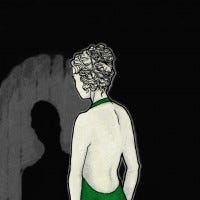Analysis: Why User-Generated Virtual Chocolate... Works?
In her latest entertaining Gamasutra analysis, designer Emily Short looks at the interaction between fiction and gameplay in PlayFirst's Chocolatier: Decadence by Design for PC -- which she says offers "unabashed dessert pornography."

[In her latest entertaining Gamasutra analysis, designer Emily Short looks at the interaction between fiction and gameplay in PlayFirst's Chocolatier: Decadence by Design for PC -- which she says offers "unabashed dessert pornography."] The Chocolatier series of casual games is a favorite of mine, as I've written about elsewhere before. So, I was excited to see PlayFirst announcing the launch of their latest, Chocolatier: Decadence by Design. The new version is fun in many of the same ways as the originals: you get to command a growing chocolate empire, buying ingredients and selling products, and playing small arcade games to establish the baseline productivity of your factories. The arcade elements this time around were a little less challenging than in Chocolatier 2: Secret Ingredients, but in a way that made them less distracting from the overall game structure. They've also smoothed out a few other little game-design hiccups. It's no longer possible to strand yourself someplace without money and without chocolates to sell, because another character will offer you a loan. So, there's good stuff here. What's New And Sweet I was even more pleased to see that this version of Chocolatier was branching out to allow the player to design her own chocolates to sell. That idea was a logical extension of the gameplay in the second game, where the player has a chocolate tasting lab, but can only experiment to discover recipes previously intended by the designers. In Decadence by Design, the player gets the opportunity to combine ingredients freely, then create an appearance for the new confection and provide it with a name and a description. This is fun. That sounds silly, but many of my most enjoyable moments with the game involved blending flavors together and then trying to picture what the results should look like. I also enjoyed coming up with slightly risque titles for my confections, which, er, was possibly a reaction to the squeaky-clean, G-rated ambiance of the rest of the game. Many games that allow a certain amount of customization that is basically irrelevant: you can pick the hair color, hat style, and chin shape of an avatar that you look at for the rest of the game, but on the other hand, your character's physical appearance has no significance to the plot. In Chocolatier, though, the player is supposed to be learning the craft of chocolate making. There is a tacked-on framing plot about lost love, but since the player has no influence on this other than by moving the game forward, and since that story is written to be so peripheral, the real narrative arc here concerns the player character's progress towards total chocolate mastery. So being allowed to blend your own chocolate experiments is a much more interesting representation of that craft than scurrying around the globe completing recipes given to you by other people. The Imagination Confection Another benefit of this gameplay element: the chocolate mixing encourages the player to imagine the flavor of the chocolates in question, to think about what might taste good together, to contemplate combinations of texture and crunchiness. Since a lot of the appeal of the whole series is in its fictive veneer -- this is unabashed dessert pornography -- it's surely right to give the player more of a chance to wallow in the chocolatey goodness of it all. By the end of the game, one really has a rich flavor palette to work with -- everything from candied rose petals to saffron -- and I had a lot of fun concocting themed recipes, crazy recipes, recipes that emulated my favorite real life chocolate bars, and so on. I couldn't bring myself to taint perfectly good chocolates by putting the pistachios in them, though. Sour Sprinkles What I really wish is that there had been a lot more of this: more opportunities to make and mix your own chocolates; more detailed feedback on the mixtures; more of a system to learn about which chocolate combinations worked and which didn't. The chances to create new recipes are doled out sparingly, as a reward for major achievements in gameplay. They make a good reward, I admit, but I would rather have had them be more the norm than the exception. And there isn't really enough feedback to teach the player any general principles of chocolate mixing. Oh, there are a few limits on what you can create. Some blends, especially chocolates without any sweetener included, will get bad marks from your tasters in the lab for being too bitter. If you try to make a truffle with no truffle powder, the game will deny you. But you can get away with other combinations that seem equally implausible, like a chocolate bar that includes no cacao or sugar at all. I'm not sure whether the game's model genuinely allows for the possibility of a lemon-orange-hazelnut bar (a solidified stick of citrus-flavored Nutella, I guess), or whether its diagnostics were simply buggy. Sometimes, you'll get comments from your tasters saying that a given flavor element really sets off a recipe, or that a certain flavor pairing is advantageous -- my taster really liked the lemon/hazelnut combination, evidently -- but it's not clear what that means in terms of the underlying model. Moreover, I had the impression from my experiments that sometimes the feedback given was slightly randomized, so the taster might not comment on a good pairing of flavors the second time he tasted the same recipe. The advice is inconsistent. Sometimes, a taster discouraged me from using all one ingredient, but other times, he really seemed to like my proposed all-chile-peppers "Fire of a Thousand Suns" bar. (Too bad I couldn't summon the nerve to manufacture this thing.) Muddled Mint Chocolate So, how does one optimize? If I hit a good flavor pair, does that mean my bar is going to be a success? Should I be trying to find those? Or should I (as I thought at other times in the game) be trying to construct combinations of the most expensive ingredients to hand, on the grounds that they'll seem exotic? Or should I be reaching for ingredients that haven't appeared in many previous compounds, in order to make the most of novelty? It's not clear. There are too few opportunities to experiment with the system. The feedback one gets is too vague. Some products clearly command higher prices than others on the open market, it's rarely obvious why, and by the time you've committed to a recipe and added it to your recipe book and started manufacturing it, there's no way to go back and tinker to improve the flavors. Some time much later -- after another hour or two of play -- you may get another chance to make a recipe; but it will likely be a different kind of recipe, for truffles this time rather than infusions, and you don't get the chance to try and screw up and test and retest. In fact, even after a bunch of replaying, I never fully worked out the system. There's an annoying bug in the Mac version of Decadence by Design that causes it to crash a good percentage of the time when the player switches between windows and then switches back to Chocolatier. (Like a lot of monomaniacal multitaskers, I rarely play games in full-screen mode: it feels dangerously like wasting time.) So, I lost a bunch of progress on several occasions until I figured out what the triggers were for this crash, and wound up playing large stretches of the game two or three times instead of just once. And that still wasn't enough to let me figure out what sorts of rules underlay the pricing of the designed chocolates. Besides, replaying involuntarily convinced me that this isn't a game designed to be replayed: too many of the sequences of play are too linear, and all the thrill of discovery is gone on the second runthrough. One might conceivably play over again months later, but certainly not the next day and with the intention of cracking how the chocolate system works. The character dialogue sometimes offers tantalizing little hints, like "Isn't it interesting that some ingredient combinations offer a much higher profit margin?" This seemed to be the game heavy-handedly directing the player to seek a strategy, rather than just customizing to suit one's personal aesthetic tastes. It would only be sporting to help the player find said strategy. Unless, of course, there isn't really a well-worked out system behind the scenes, and Chocolatier: Decadence by Design is using randomness to simulate complexity. Or bugs to simulate randomness. It's really irksome to have spent this much time playing a game and come away not knowing whether a whole level of play complexity even exists, or whether the game was hinting at something that isn't there, by pretending that the economic model was assessing and giving prices to my creations on a much subtler set of rules than it was actually using. It doesn't help that the experience was demonstrably buggy. How To Sweeten The Pot Committing more fully to the "by design" aspect of the game would make Chocolatier less like a tycoon game and more conceptually similar to mix-and-match fashion games such as "JoJo's Fashion Show." I can see how that might be risky. There is, I assume, always a bit of a balancing act, especially when it comes to creating sequels to popular casual games, where the assumption seems to be that the fans of the original want a second slice of the same cake. And, in fact, I was a bit disappointed when the makers of Chocolatier took a break from the tycoon/"economic simulation" form to make The Great Chocolate Chase, a time-management game set in the Chocolatier universe -- though my gripe there was mostly that it was a very uninventive time management game and badly balanced in the highest levels. It felt like a failure of imagination, or a decision to cash in on a lucrative genre, rather than a genuine contribution to what the Chocolatier games try to do. The concept of having the player mix her own chocolates was a good one, though -- one that fit into the themes and motives of the series, one that reflected the progress the player character was supposed to be making. That was a gameplay idea worth fleshing out even more. I even think that element could have been developed a bit without reaching a complexity level off-putting to the core audience of the series. All that the player is required to do is make and sell some viable recipes. The puzzle of optimizing those recipes for profit would be entertaining for people who want to do that, without holding up players who are in it for an easier experience. It just needs to be rounded out to be more playable as a puzzle. I hope it's clear, though, that the gist of all this griping is: the latest Chocolatier game makes a move towards a better, more thorough synthesis of gameplay and fiction than the previous entries. It doesn't go as far as I would like, that's all. PS.: Yeah, I know it should be "Saint Clements" with a T. [Emily Short is an interactive fiction author and part of the team behind Inform 7, a language for IF creation. She also maintains a blog on interactive fiction and related topics. She can be reached at emshort AT mindspring DOT com.]
About the Author(s)
You May Also Like









